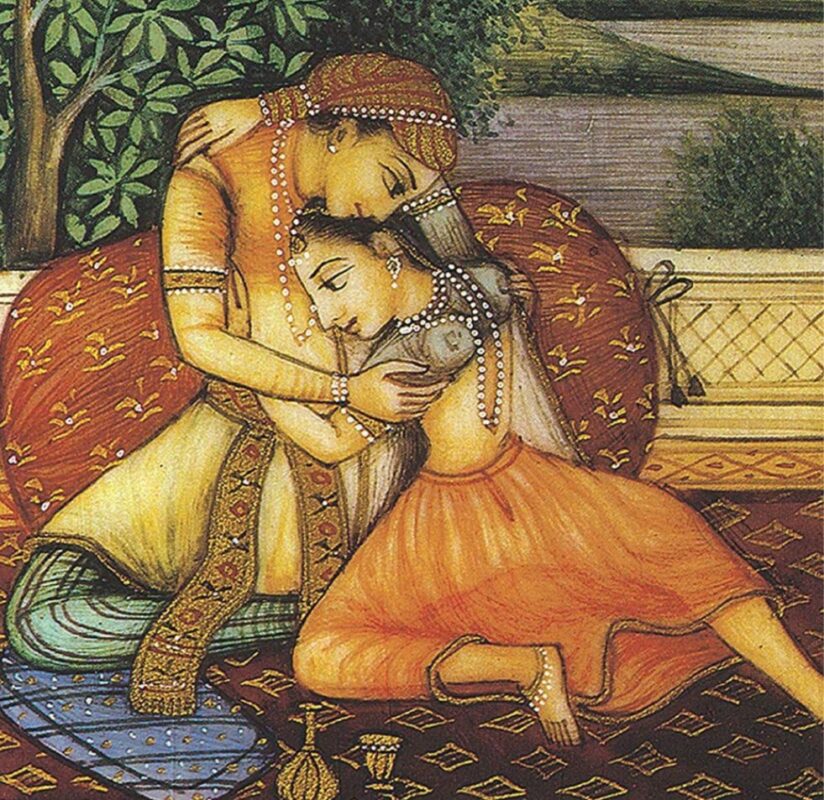The word ‘Kamasutra’ is considered to be a study of sexual relationships or sexual intercourse. But Kamasutra is neither about sexual practices or sexual activities one must follow to fulfill their needs nor it is entirely and primarily about knowledge on sex.
What is Kamasutra?
Kamasutra glorifies and describes the concept of companionship, love, pleasures of life with or without sexual connectivity and nurturing one’s love life with a blend of vedic or classical sanskrit poesy verses. It can also be defined as social enjoyment, finding love, wooing, courtship and blossoming one’s married life. It speaks volumes on ideology and theory of love, onset of desire, strengthening it and how and when it goes off limit which should be kept in moderation.

Origin –
Kamasutra is a primitive Indian transcription that tells about passion, emotional needs and eroticism. It is written by an ancient Indian philosopher, Vatsyayana on sexual orientation of humans which can be traced back to (400 BCE to 300 CE). It is one of the most prehistoric content on erotic love.
Later it was individually printed and translated in english by orientalist Sir Richard Francis Burton in 1883 which can not be said as translation because he didn’t translate but modified to match the Victorian British attitudes.

Context
According to Hindu tradition there is a concept named purusharthas (object of pursuit) which abstracts the four major objectives of life which are Dharma (merit), Artha (wealth), Kama (contentment) and Moksha (salvation). These four objectives are mandatory and ample for requirement of worldly happiness.
Dharma –
Dharma denotes an individual’s aim towards their commitments, regulations, behaviour, ethical path, righteousness, upright lifestyle, societal etiquettes and honest livelihood.
Artha –
Artha includes an individual’s predominant focus on way of living which are luxury, occupation/ employment, capital and profitability.
Kama –
Kama concerns a human’s craving, impulse, wants, requirements, lust, yearning, emotions, feelings, care, liking, bond and love with or without sexual pleasures.
Moksha –
Moksha symbolises liberation, freedom, untying from worldly desires, salvation, detachment, free from the circle of reincarnation and dying, equality, self-understanding, self-actualization and independence.

Erotic themes of kamasutra on Indian temples
1. Khajuraho Group of monuments, Madhya Pradesh
The subject matter behind the idols of khajuraho temples contain erotic content. It is a nagara style sculptures with engravings on sculptures that enclose artistic work of sexual actions.

2. Sun Temple, Konark
A majestic temple with wonderful carved statues. As the name suggests the temple is devoted to lord of shine, sun god. The scenes on the walls focuses on sexual desires and union.

3. Thirumayam fort, Tamil nadu
Segments of kamasutra decorated on outer walls of the temple. One reason of this carvings may be that an individual has to detach himself from lust and desires before entering the temple.

4. Lingaraja temple, Bhubaneshwar
The temple is exclusively devoted to lord mahadeva and contains figures from the holy book of kamasutra. The images of enchanting apsaras, the beauties from heaven are carved on walls.

5. Virupaksha, Karnataka
This temple is dedicated to lord Neelkanth build during 10th century which glorifies erotic carvings on the walls. The sculptures promote the conditions of polygamous unions.

Do you know any more temples depicting Kamasutra? Let us know in the comments section!

